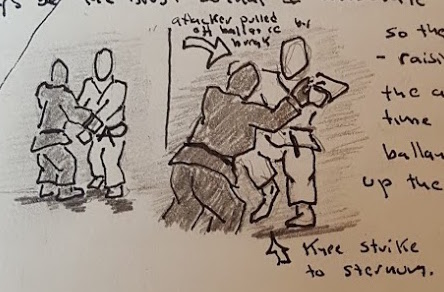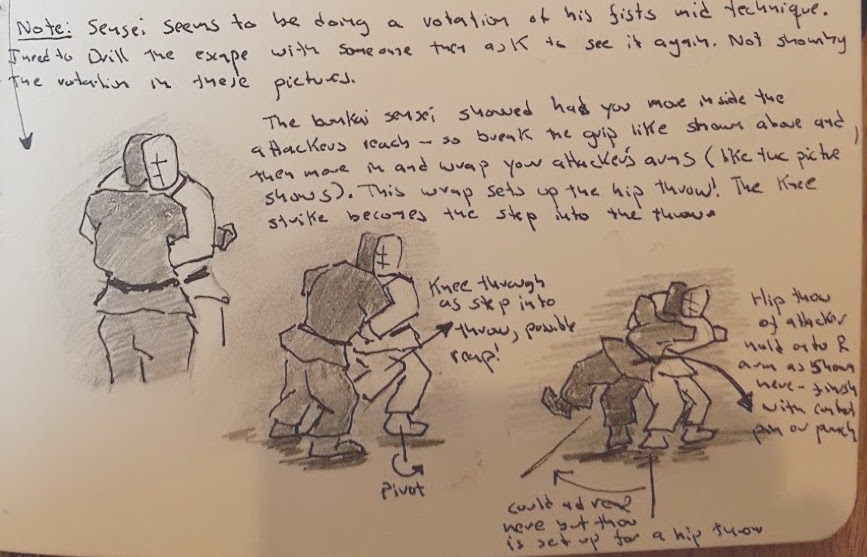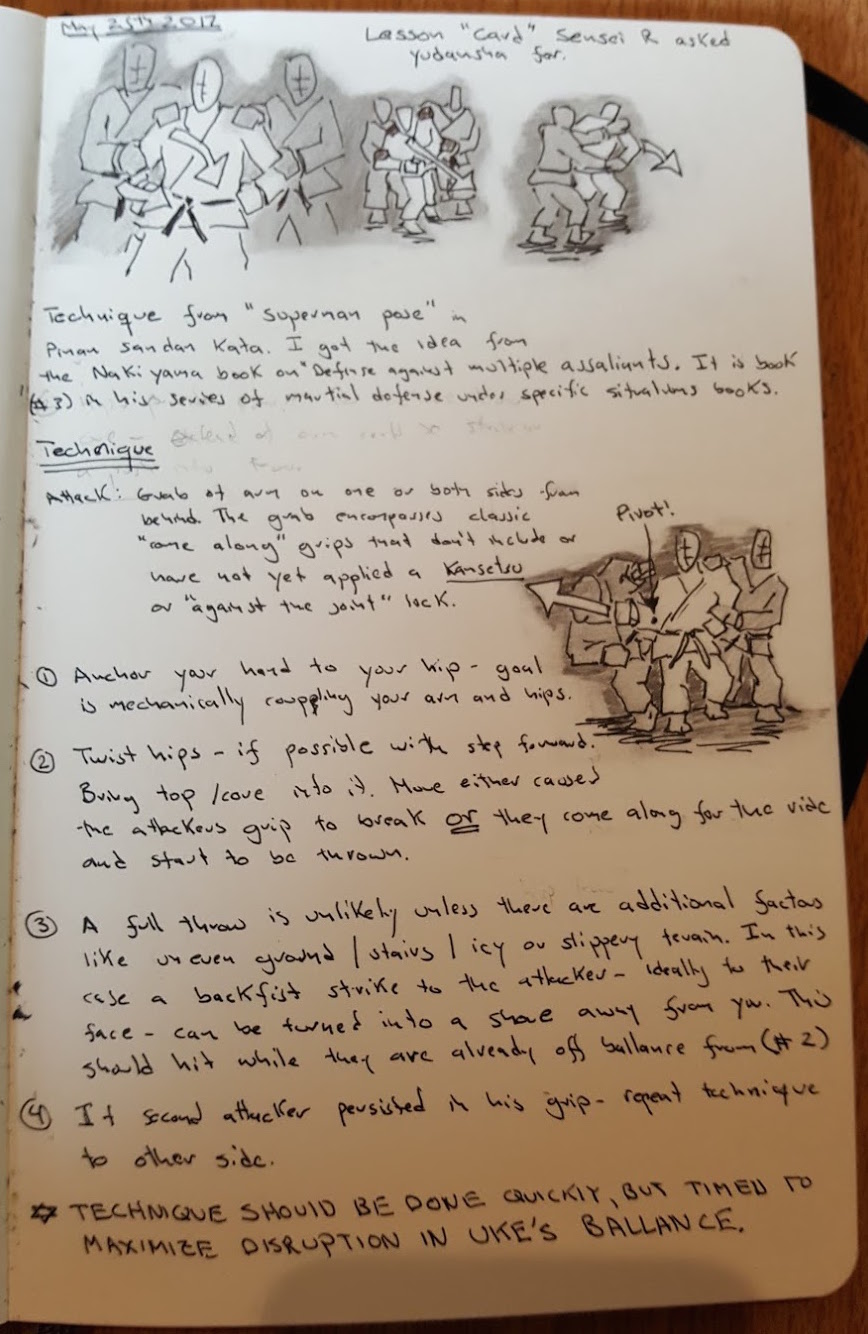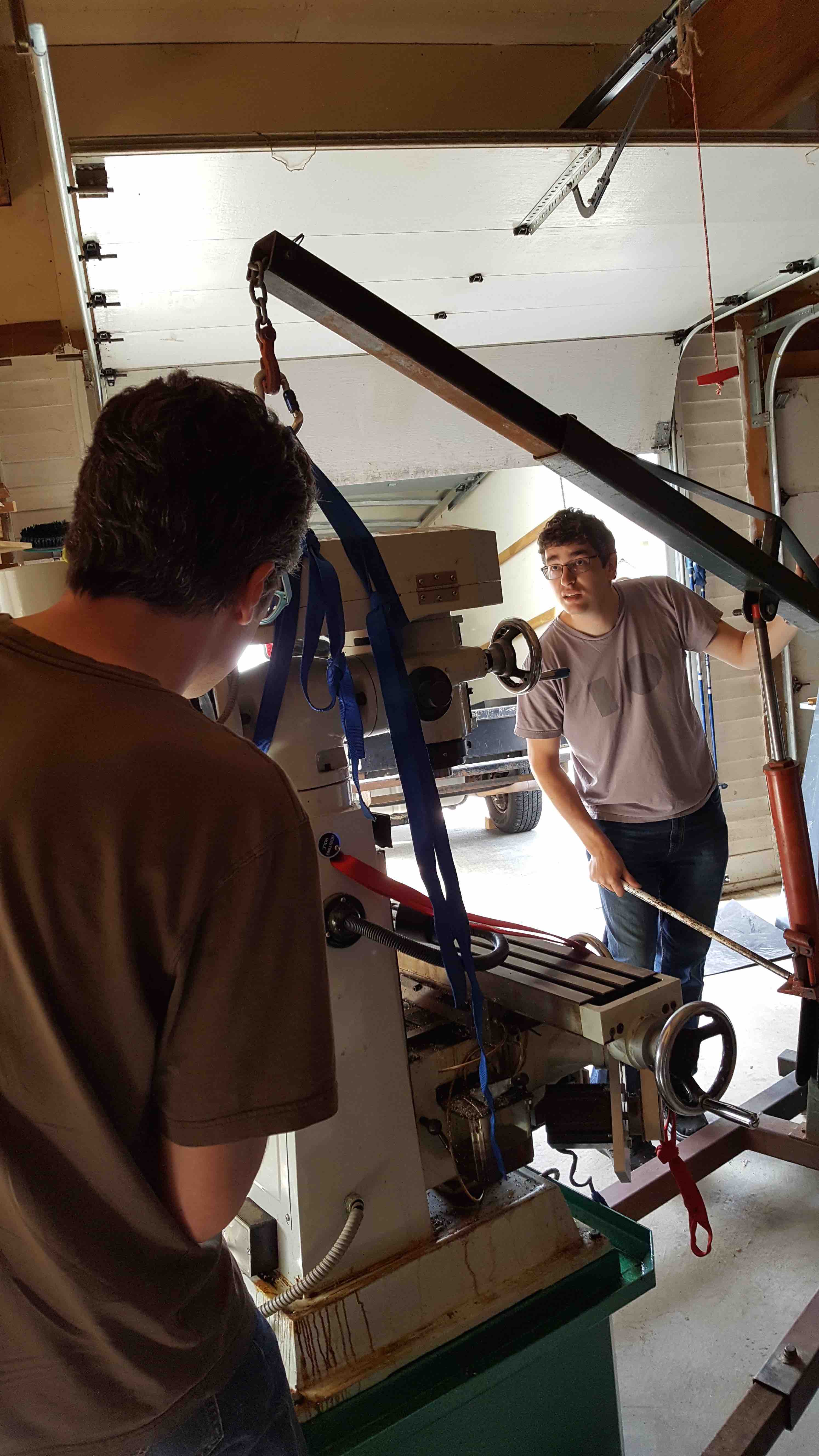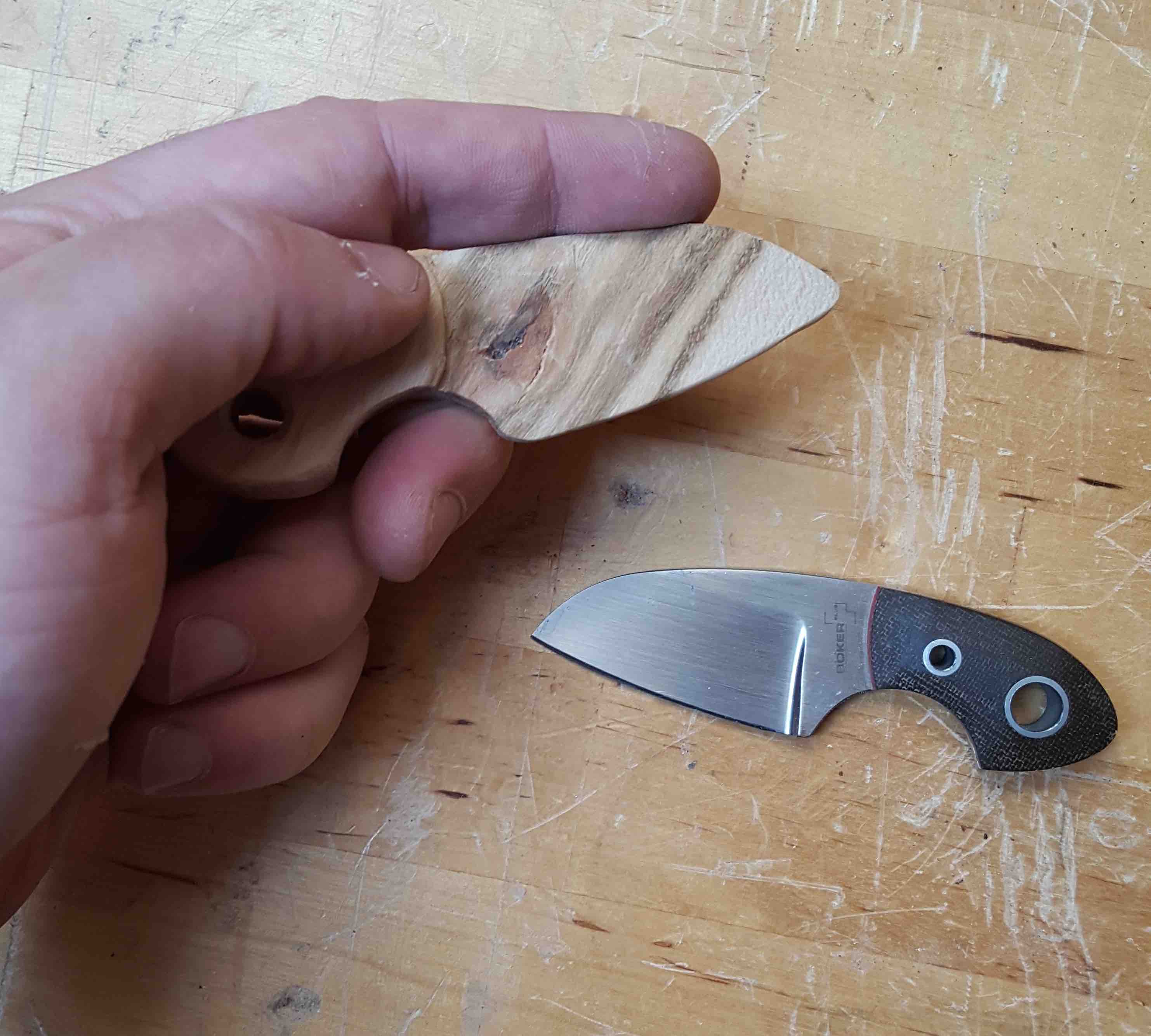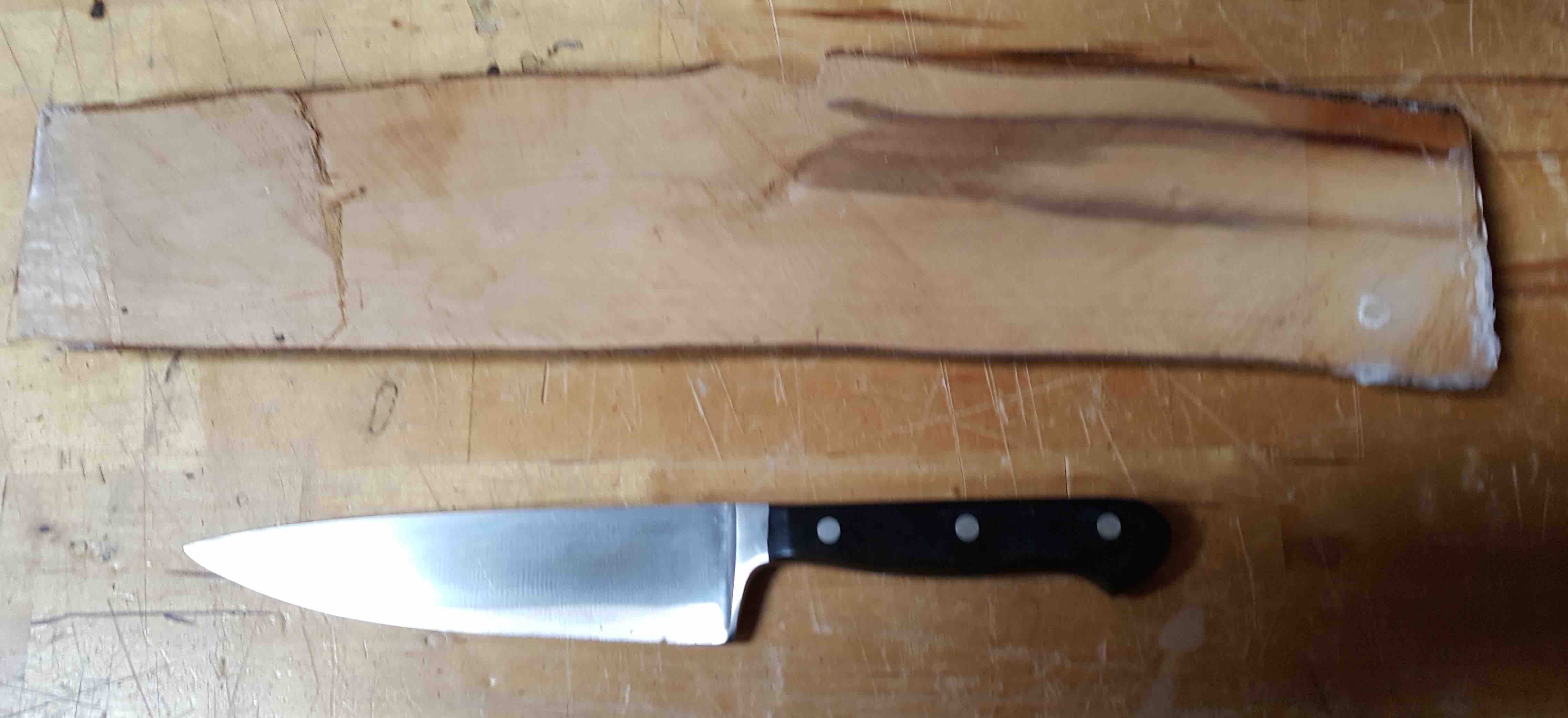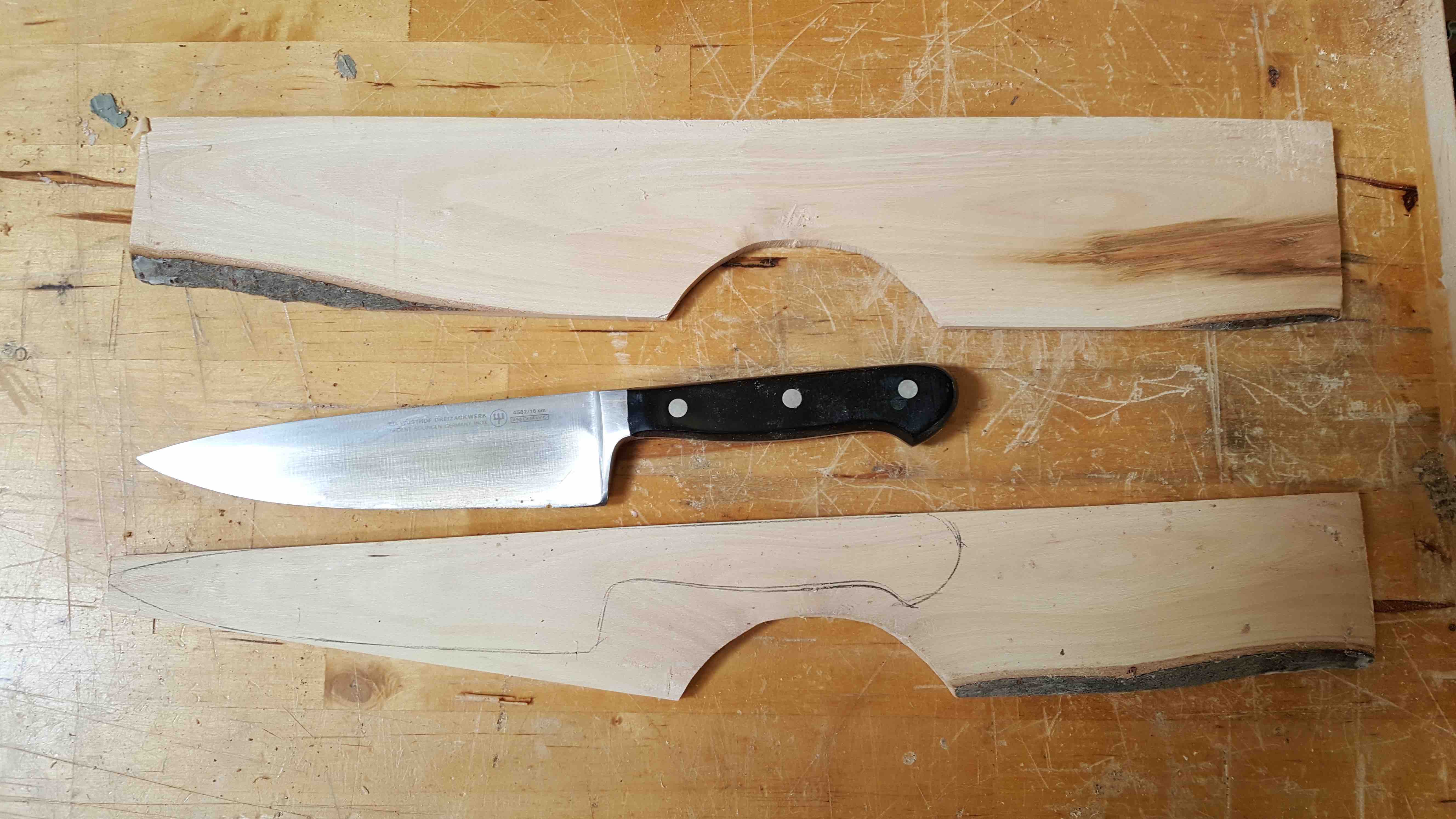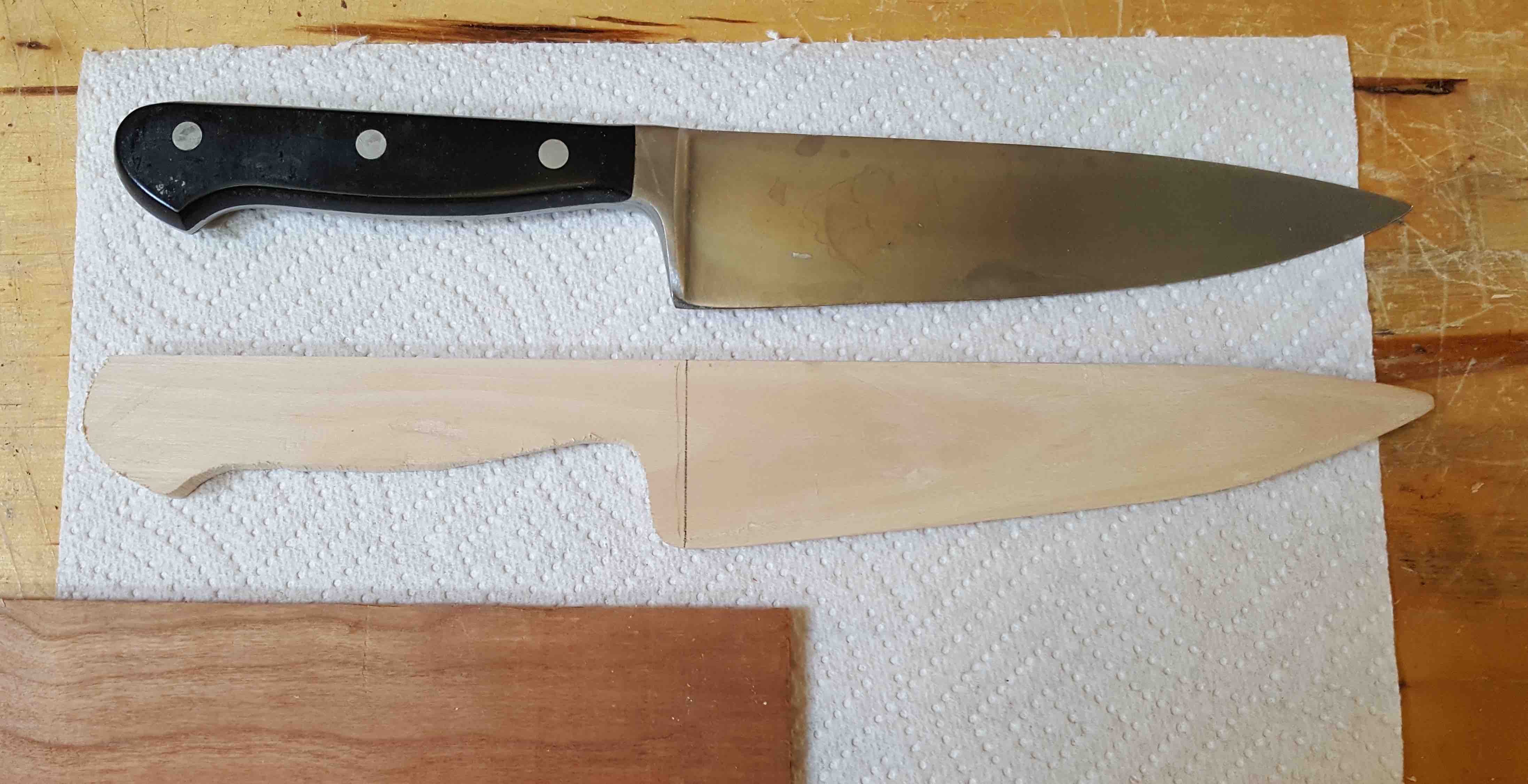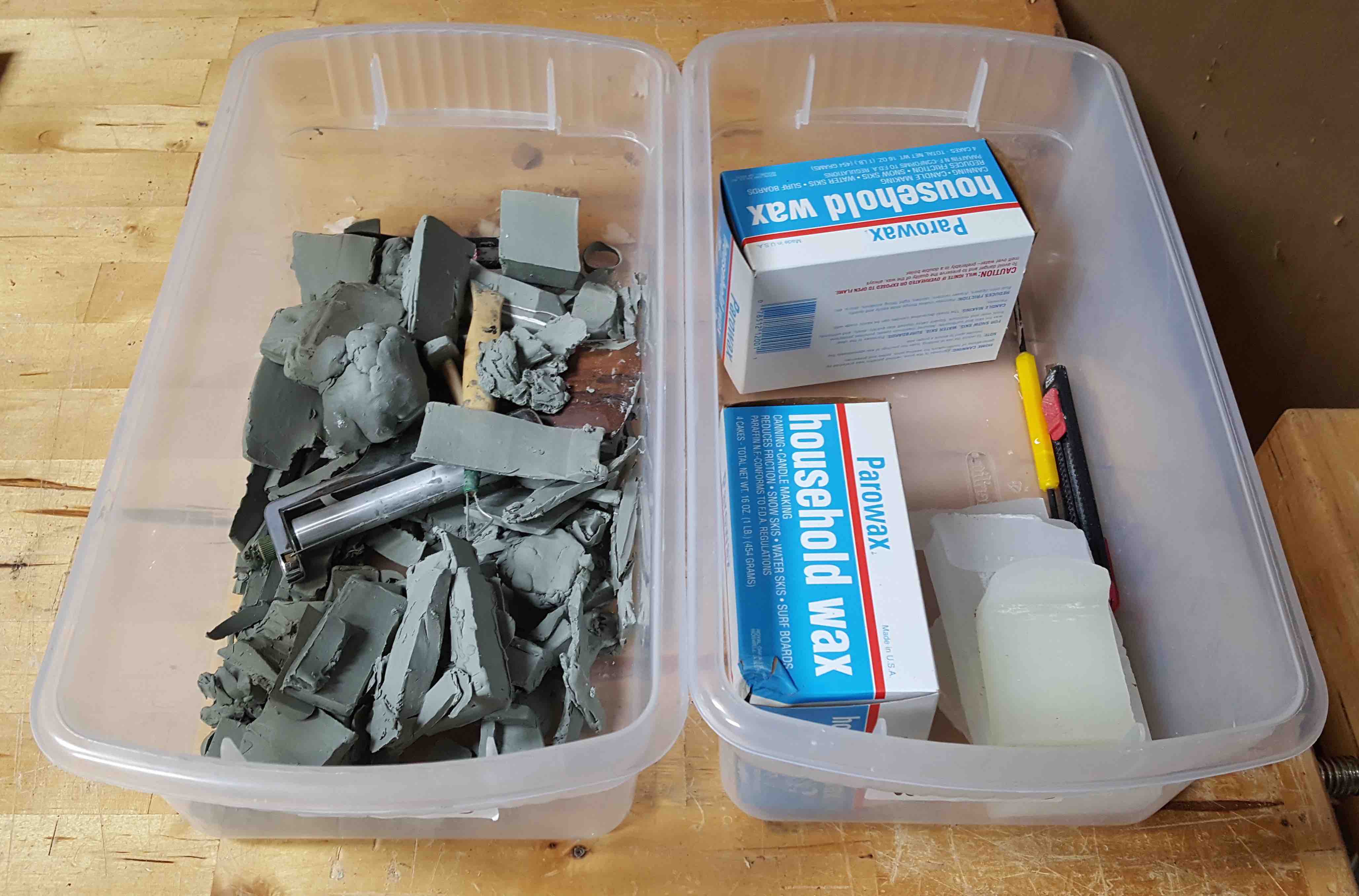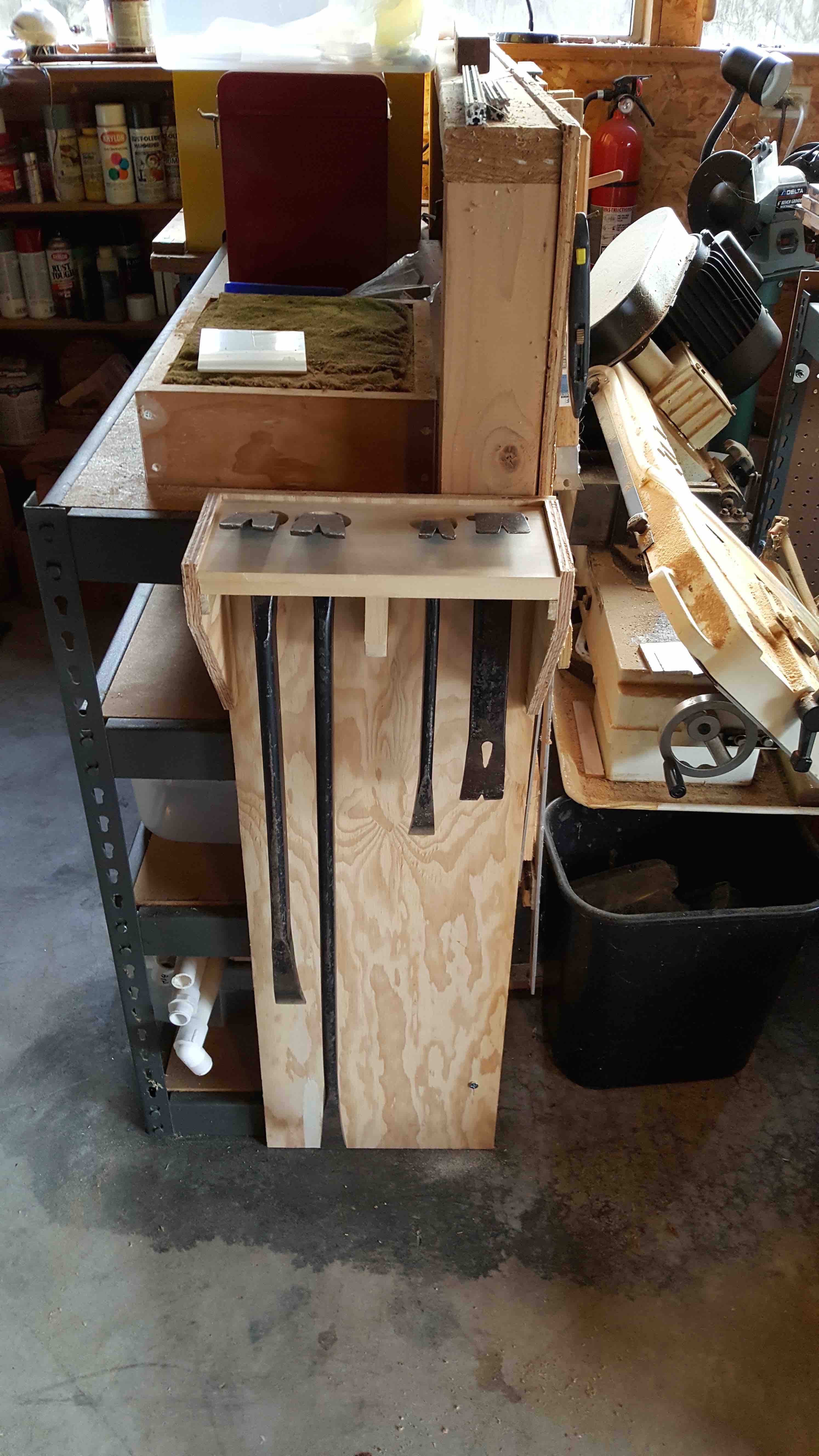Sensei asked that the black belts write up two techniques demonstrating Bunka. Since I already keep a martial notebook – I am going to cheat for this second one and use my write – up of a Bunkai he showed me last month for Pasai-Dai. I am choosing this one since – like the other technique I wrote up – it also starts from an escape from being grabbed, only this time from the front.
In the Pasai-Dai kata there is a move representing a response to a double-handed wrist grab from the front. The arms are drawn up and out breaking the attackers grip, while at the same time you strike him in the sternum with your knee. From there things get interesting.
You close with your attacker, going chest to chest, and wrap up his arms with your own. I believe this technique works best on an attacker of similar size – plus or minus maybe 30-35% of your body weight; I have been thrown hard this way by someone 6 inches shorter and fifty pounds lighter than myself.
The throw can be turned into a reap or a hip throw depending on the specific energies going into the attack and response – but in either case the thrower needs to be aware that they have the attackers hands bound up – which can make for an incredibly high hard fall. In other words don’t be an ass – when training the technique let the person out on the way to the ground a bit early so they can break fall.
Another interesting part of this throw is that you can hold the person with their arms bound up, and your hips turned to avoid a groin strike giving them a moment to calm down while you have a quiet few words with them. Then if they don’t calm down you can throw them to the ground and pin them there as needed. So it’s a throw for calming down someone you don’t want to hurt if you don’t have to.
Not my favorite technique – but I thought it was interesting enough to record and come back to and practice. The weird arm entanglement looks like it would be ineffective or hard to get to – but when the technique was shown to me I found it was unexpected and effective at locking up my upper body and my normal responses.
